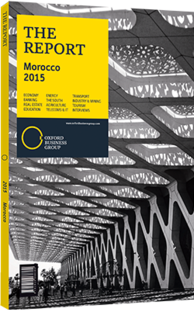Morocco sets up fund to support investment in tourism projects
Under its national tourism development plan, Vision 2020, Morocco has set itself the ambitious goal of raising bed capacity in the hospitality sector to 375,000 beds by the end of the decade. As of 2014, classified hotel bed capacity stood at 216,386, up from 176,630 in 2010 and 95,180 in 2000, with Marrakech having the largest portion (30%), followed by Agadir (16%) and Casablanca (8%). Despite this progress, however, whether Morocco will be able to achieve its target by the deadline is debatable, as the sector has grappled in recent years with how to attract the funding needed for its development projects.
Limiting Factors
Part of the problem stems from the banking sector’s reluctance to finance them, given a number of uncertainties that have arisen since 2008. Following the global financial crisis, which put a cap on banks’ capacities to allocate funds, Morocco's tourism sector was also impacted by several events, both domestic and external, which slowed growth, including the continued economic doldrums in Europe, incidents in neighbouring countries and heightened perceptions of regional risk.
Indicators, despite maintaining a positive trend, have not progressed at the expected pace. It took the country until 2013 to realise its objective of attracting 10m visitors, initially set for 2010. Average hotel occupancy rates have been another dissuasive factor: potential for expansion and investment becomes more apparent when these hover around 70%, yet the rate in Morocco in 2014 stood at just 50%.
Credit Distribution
As a result, loans allocated by the banking sector today account for a mere 2.4% of credit to the economy, down from 3.3% in 2009. Difficulties in obtaining credit have evidently put a strain on investment. Results of a survey carried out by the National Association for Tourism Investors and unveiled in June 2015 revealed that three-fourths of investors surveyed – accounting for 70% of Morocco’s hotel capacity – plan to withdraw or halt their developments over the next five years. The association’s survey also revealed that foreign investment in Morocco’s tourism sector remains limited, and that 77% of invested capital is carried out by locals. Debt is another troubling factor: the sector’s current level of indebtedness is two and a half times higher than other sectors, amounting to Dh18bn (€2bn).
To ease access to finance and restore confidence among investors and the banking sector, in September 2014 the government announced plans to launch a guarantee fund to support investment in tourism projects. The fund, expected in 2015, will be set up in partnership with the Ministry of Finance, the Professional Group of Moroccan Banks and the World Bank.
Promoting Investment
In 2008 the government established the Moroccan Agency for Tourism Development (Société Marocaine d’Ingénierie Touristique, SMIT) to attract investment and develop tourism projects in partnership with the private sector. In 2014, the agency invested Dh16.2bn (€1.8bn) under Vision 2020, and it is estimated that 138,000 out of the 200,000 new beds to be created by 2020 have already been contracted. In 2015, the government hopes to mobilise Dh18bn (€2bn) in investment, adding 15,000 new beds, up from 8820 in 2014.
In 2014, SMIT contributed to finalising the 15 regional contract programmes (Contrat Programme Ré gional, CPR), which fosters public-private partnerships for infrastructure projects designed by the government and the private sector to boost development and growth. SMIT is assisted by the Moroccan Fund for Tourism Development, a public sector funding pool created in 2011 to attract and direct funds towards specific regional tourism projects. In partnership with three Gulf investors – Qatar Holding, Kuwait’s Al Jalil Investment Fund Holding and UAE-based Arab Investments – the fund established the Wessal Fund to invest up to Dh20.8bn (€2.3bn) in the tourism sector. It is currently funding two of the country’s flagship developments, Wessal Casa Port in Casablanca and Wessal Bouregreg in Rabat (see overview).
You have reached the limit of premium articles you can view for free.
Choose from the options below to purchase print or digital editions of our Reports. You can also purchase a website subscription giving you unlimited access to all of our Reports online for 12 months.
If you have already purchased this Report or have a website subscription, please login to continue.

